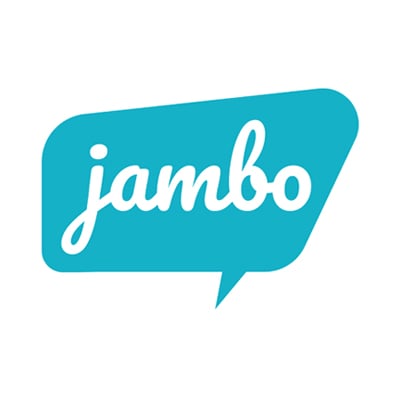
Sie haben vielleicht schon von Leuten gehört, die versuchen, ein CRM für ihr Stakeholder-Management zu nutzen, aber wussten Sie, dass es eine Software gibt, die speziell für das Stakeholder-Management entwickelt wurde? Sie heißt Stakeholder Relationship Management (SRM) Software!
What's the difference between a CRM and an SRM?
Beide Systeme helfen Ihnen zwar beim Speichern und Organisieren grundlegender Daten wie z. B. Kontaktinformationen, doch im Großen und Ganzen verfolgen die Systeme sehr unterschiedliche Ziele.
CRM steht für Customer Relationship Management (Kundenbeziehungsmanagement) und soll den Benutzern helfen, ihre Kunden und Verkäufe zu verwalten.
SRM steht für Stakeholder Relationship Management, und ein SRM soll den Benutzern helfen, ihre Stakeholder-Informationen und die Beziehungen zu diesen Stakeholdern zu verwalten.
Was ist Stakeholder Relationship Management Software (SRM)?
Die Software für das Stakeholder Relationship Management (SRM) wurde speziell dafür entwickelt, Sie bei der Verwaltung aller Beziehungen zu Ihren Stakeholdern und der Kommunikation mit ihnen zu unterstützen.
SRM-Software ist ein zentraler Ort, an dem alle Stakeholder-bezogenen Informationen gespeichert werden. Diese Informationen können Kontaktinformationen der Stakeholder, Aufzeichnungen zum Engagement, Probleme der Stakeholder, Verpflichtungen, Berichte und andere Stakeholder-bezogene Notizen umfassen.
Mit einem hochwertigen SRM können Sie sicherstellen, dass Ihre Stakeholder-Informationen organisiert, zugänglich, durchsuchbar und leicht verständlich sind, so dass Sie sich auf den Aufbau sinnvoller und vertrauensvoller Stakeholder-Beziehungen konzentrieren können, um bessere Projektergebnisse zu erzielen.
For more information, check out our comprehensive guide on Stakeholder Relationship Management Software
4 reasons teams across industries choose an SRM over a CRM for stakeholder management
1. No costly customizations or hidden fees
Trying to make a CRM work for your stakeholder management might seem like a cost-effective option if you’re already using a CRM for another purpose. However, CRMs are made for managing customers and sales, not stakeholders. You’re not selling to your stakeholders; you’re engaging with them, so it doesn’t make sense to use a sales software for stakeholder management.
As a CRM isn't designed for stakeholder management, you'll likely have to spend more money to try to customize the software to meet your needs, which can become expensive quickly.
Alternatively, choosing an SRM will help ensure you have the right software designed to meet your needs and adapt with your organization especially if you select an SRM committed to regularly updating the software with new features focused on improving stakeholder management. Plus, utilizing an SRM with a customer success team that is knowledgeable about stakeholder management will help ensure the software is set up to meet your needs without the hidden fees or clunky customizations often seen in CRMs.
2. Higher user adoption rates for better data
By utilizing a CRM for your stakeholder management, you'll likely see lower user adoption rates due to the feature bloat focused on customers and sales instead of stakeholder management. Complicated user interfaces will also unnecessarily complicate your processes and your team’s understanding of how the software works. Ultimately, when software is complicated to use or confusing to understand, teams will avoid using it, which results in those lower user adoption rates. When your team avoids software, you're likely to have gaps in your data because your stakeholder information is not being consistently inputted into a centralized and accessible software, leaving your project open to even more risks.
Choosing an SRM with streamlined workflows made to meet your organization’s stakeholder management needs will ensure a better and more enjoyable user experience for your team, which will increase the likelihood that they’ll use the software consistently. With your team all inputting data into an organized SRM, you can be sure that you’ll have access to all your crucial data so you and your team can gather quick and valuable updates on your stakeholder relationships and projects.
Want to learn more about the user experience in an SRM? Check out our blog!
3. Understand your stakeholders for better project outcomes
Um diese entscheidenden Stakeholder-Beziehungen aufzubauen, müssen Sie Ihre Stakeholder verstehen und ihre Sichtweise auf Ihre Projekte und Ihr Unternehmen kennen lernen.
Da ein CRM keine auf Stakeholder fokussierten Module hat, die alle Ihre Stakeholder-Daten (wie Kommunikation, Probleme oder Verpflichtungen) organisieren, ist es schwierig, Ihre Stakeholder-Informationen sinnvoll zu nutzen, um herauszufinden, was Ihren Stakeholdern wichtig ist, was kontraproduktiv ist, da das Verständnis Ihrer Stakeholder für das Stakeholder-Management entscheidend ist. Im Gegensatz zu CRM bieten einige SRMs auch die Möglichkeit, Stakeholder-Daten projektbezogen zu betrachten, was für viele Stakeholder-Engagement-Projekte und -Programme wesentlich besser geeignet ist und die Nachverfolgung und Berichterstattung für Ihre Teams wesentlich erleichtert.
An SRM is designed to organize all your stakeholder information easily. Whether you dive into a stakeholder profile before your next meeting to learn essential information about the stakeholder you’re meeting with or run a comprehensive report on all logged data on one (or several) stakeholders, you're quickly updated and can pull insights on what they care about based on what they’ve previously shared with you or your team. Having access to this information can help you fill in gaps in knowledge and focus your messaging, so you're engaging in a respectful and relevant way, allowing you to show you're listening to their perspectives to build more vital stakeholder trust and better relationships.
For more on how an SRM can help you to understand your stakeholders, visit our blog!
4. Stay on top of issues and lower your project's risks
Bei Stakeholder-Problemen ist es nicht ungewöhnlich, dass ein Problem monatelang oder sogar jahrelang offen bleibt, da die Lösung mancher Probleme viel Zeit in Anspruch nehmen kann. Ohne eine einfach zu bedienende Software, die alle Informationen über Ihre Stakeholder organisiert, kann ein Problem leicht in Vergessenheit geraten, was das Vertrauen der Stakeholder zerstört und die Risiken Ihres Projekts erhöht.
By choosing an SRM with a materiality matrix and an issues timeline, which shows specific interactions around how you’re working towards a resolution (both available in our SRM, Jambo), you can keep all your issues organized and accessible, regardless of how long they've been open while prioritizing the highest risk issues to protect your projects better and work more effectively with your stakeholders.
For more on how SRM and CRM are different, visit our blog!
Why choosing the right stakeholder relationship management software is important
While an SRM is the right tool for stakeholder management, different SRM options on the market will have various features, support options and offer a unique user experience. To make the most out of SRM software for your stakeholder management efforts, you want to choose the option that works best with your goals and your teams to help ensure success.
How to choose the best SRM
Um das beste SRM auszuwählen, sollten Sie zunächst mit Ihrem Team eine Liste erstellen. Notieren Sie alles, was Sie sich von Ihrem SRM wünschen, und beginnen Sie dann anhand dieser Liste mit der Suche nach Optionen auf dem Markt. Sobald Sie einige potenzielle Optionen gefunden haben, empfehlen wir Ihnen, sich eine Software-Demo anzusehen, um zu beurteilen, wie gut sie den Anforderungen Ihres Teams oder Ihres Projekts entspricht.
Wenn Sie mit Ihrer SRM-Reise beginnen möchten, laden Sie unsere kostenlose Checkliste mit Tipps herunter, worauf Sie bei einem SRM achten sollten. Diese Liste gibt Ihnen verschiedene Funktionen und Optionen an die Hand, die Sie in Betracht ziehen können, und hilft Ihrem Team zu verstehen, was ein SRM Ihrem Unternehmen bieten könnte.
Nächste Schritte
Wenn Sie Ihr Stakeholder-Management auf die schnellste und einfachste Art und Weise vereinfachen und organisieren möchten, ist die Entscheidung für ein SRM anstelle eines CRM sinnvoll. Um zu erfahren, wie Sie sich von Tabellenkalkulationen verabschieden können, lesen Sie unser kostenloses eBook!









